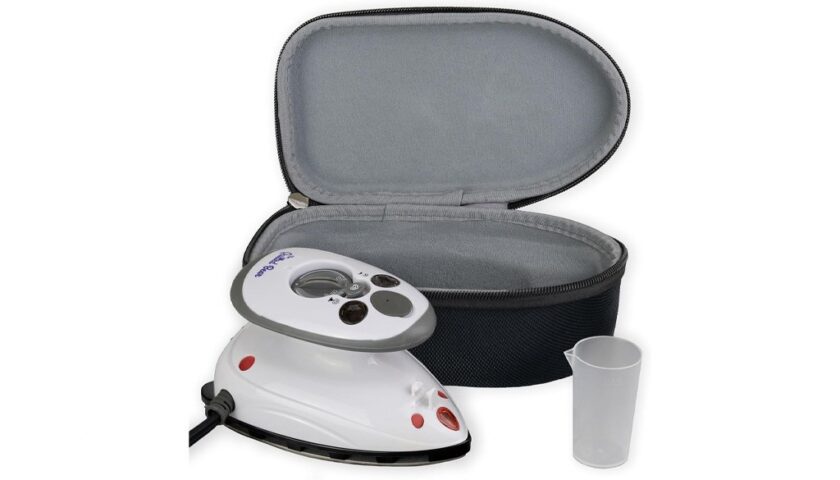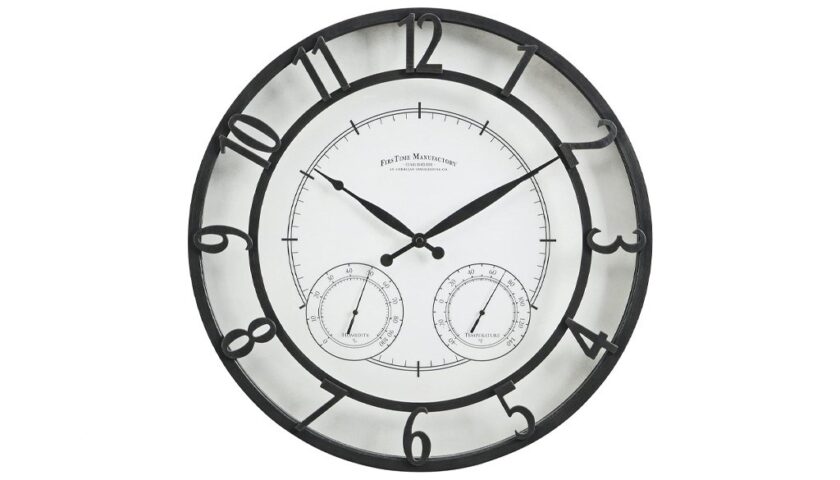Which one is a cut above?
Despite wooden cutting boards being the overwhelming favorite of professionals, such as butchers, they still get a bad rap. Some people claim that because wood is porous and can absorb liquid, it’s unsafe to cut meat on it. So, is plastic the best cutting board material?
Both wooden and plastic cutting boards can be and are safe for any kind of food, with wood having a slight lead in terms of food safety and knife wear prevention. We rounded up top picks for the best cutting boards, including custom cutting boards that make great gifts for cooks, bakers and foodies.
The ultimate gift guide for foodies
Why is a clean cutting board important?
Cross-contamination is the transfer of harmful bacteria from one object to another. Cutting raw chicken and then slicing fresh produce on the unwashed board is the perfect example of cross-contamination. This can happen between any two foods that might have germs present. Even lettuce, a significant source of E. coli infections, can lead to cross-contamination when not properly washed.
There are peer-reviewed studies on the bacterial retention and decontamination of both materials. The conclusion is simple. Whether your cutting boards are plastic or wooden, the most crucial step is thoroughly washing and drying them before switching foods. If you’re careful, both materials are safe.
Why are plastic cutting boards worth it?
Plastic equipment is lightweight, space-efficient and easy to clean. It’s also durable and affordable. A plastic cutting board can withstand vigorous hand washing, high-temperature machine washing and chemical sterilization. That’s one of two main reasons you’ll find high-volume kitchens equipped with plastic cutting boards.
Plastic also allows for color coding. Typically, red cutting boards are for red meat, tan for fish, green for fruits and vegetables, blue for cooked food and white for dairy. These sometimes vary between states and cooking establishments. While restaurants use them, most home cooks don’t opt to buy cutting boards in each color. That’s OK as long as you’re thorough with cleaning and sanitizing.
Are plastic cutting boards safe for knives?
The plastic cutting boards are made from is soft enough that it won’t dull knives and other kitchen tools too quickly. It’s not quite as gentle on an edge as some types of wood cutting boards, but it’s suitable for some of the fanciest knives in the world.
Why are wooden cutting boards safe?
The main worry about wood cutting board safety is that it can absorb bacteria and lead to cross-contamination even after it’s washed with dish soap and water. These fears are unfounded. Wood’s porous nature does allow it to absorb some bacteria. However, instead of letting that bacteria flourish, it traps and dries out the bacteria, leaving it unable to contaminate food.
Another reason wood can be better than plastic is its ability to repair itself. Once there’s a large gauge or groove on the surface of a plastic board, it’s there to stay. This can trap bacteria between washings.
Wood, on the other hand, tends to repair gauges and grooves as time goes on. A gentle hand washing rehydrates the wood slightly, allowing it to return to its original shape and greatly minimizing the risk of trapped bacteria.
Wooden cutting boards are great for knives
A wood cutting board is the best choice for high-end chef’s knives. End grain cutting boards offer a high level of softness that minimizes the regular dulling of a knife blade. With that said, all cutting gradually dulls a knife. High-quality wood simply slows that process.
What else to look for in a cutting board
Once you’ve decided between a wood cutting board and a plastic cutting board, it’s time to think about other important features. These are some factors you should consider when picking a cutting board.
- Size: There are a range of cutting board sizes, from compact versions measuring around 5 inches by 10 inches to extra-large ones that measure about 20 inches by 30 inches. The smallest are great for little tasks, like chopping an onion or a few cloves of garlic, but can be frustratingly small when cooking for a crowd. The largest are great for commercial kitchens but impractical for home use. Most buyers will want something in between the two extremes.
- Shape: Although rectangular cutting boards are most popular, you can also buy round cutting boards. A round cutting board isn’t necessarily the most practical, but some people like how they look. Also, a wooden round cutting board can double as a trivet to protect counters from hot pots.
- Groove: Some boards have grooves around the outside to catch juices from fruits, meat or other produce that lets out liquid when you chop it. This can help avoid annoying messes.
- Reversibility: With reversible cutting boards, you have two usable sides. Sometimes, one side is grooved and one side is flat, but you can also find double-sided options with two flat or two grooved sides.
Cutting board FAQ
Are bamboo cutting boards a good idea?
A. While they’re lightweight and affordable, it’s best to avoid a bamboo cutting board. It’s significantly harder than other wood and even has mild antibacterial properties. At first glance, that makes bamboo look like an attractive material. However, it’s not any more hygienic in practice, and its hardness wears down a knife edge much faster than traditional wood cutting boards.
Why should you never use glass cutting boards?
A. Glass wears down a knife edge incredibly quickly, no matter what metal the knife is made from. It’s also hard to keep wet foods from sliding around a glass cutting surface. This makes precision cutting difficult and even dangerous. Glass cutting boards should be avoided at all costs.
Should you use flexible plastic cutting boards?
A. While they are convenient, lightweight and affordable, they don’t offer the cushion of a large piece of plastic. They’re also hard to clean. They work but are best avoided in favor of rigid plastic or wood boards.
Are wooden cutting board countertops worth it?
A. Rarely. They tend to be expensive and difficult to sanitize. They are also hard to replace if damaged. Cutting board countertops can be safe and effective with proper care, but most homeowners shouldn’t waste their money.
How big should a cutting board be?
A. The best size is the biggest one that fits on your kitchen counter. Your cutting board should be at least as tall as your biggest knife is long. Using one that’s too small makes it difficult to make consistent, precise cuts.
Best wood cutting boards
TeakHaus Edge Grain Carving Board
The high-quality wood and end-grain construction make it a fine choice for the most demanding home chefs. This teak cutting board comes with or without a juice groove. There’s also a smaller version if the large wood cutting board doesn’t quite fit on your countertops.
Shumaru Teak Wood Cutting Board
This teak model is safe for high-end blades and comes in six sizes to fit your kitchen perfectly. The large wooden cutting board is reversible with a groove to catch juices.
It has convenient handles on the sides, nonslip rubber feet and an optional juice groove that keeps meat juices off your counter. This option is 2 inches thick, meaning it’s very stable. You can choose from a maple cutting board, cherry cutting board or hardwood cutting board.
This affordable Boos Block cutting board comes from one of the top brands. You can choose from six sizes with this butcher’s block, the smallest measuring 5 inches by 10 inches and the largest measuring 15 inches by 20 inches.
Sonder Los Angeles Large Wood Cutting Board
This beautiful walnut cutting board has a gorgeous dark finish and looks as good as it performs. It’s generously sized, measuring 13 inches by 17 inches, with a groove around the outside to catch juices.
Ayiaren Acacia Wood Cutting Board With Handle
This round cutting board has a built-in loop for hanging on the wall. Crafted from acacia wood, it’s easy to grasp with the handle and can also be used for serving pizza, as a charcuterie board and more. It measures 16 by 12 inches.
Best plastic cutting boards
Thirteen Chefs Plastic Cutting Board
This no-nonsense cutting board is simple to sanitize and comes in six colors for the careful cook. It’s a large cutting board, with the smallest measuring 12 by 18 inches and the largest measuring 18 by 30 inches.
OXO Good Grips Cutting Board Set
If you typically cook for only a few people at a time, these small- and medium-sized options are perfect. Each OXO cutting board is double-sided with nonporous surfaces that resist staining and odors.
Aichoof Cutting Board Set of Four
This highly economical colored cutting board set comes with nonslip feet and a vertical storage stand for safety and convenience. Each is labeled with a different produce type, so it’s easier to stay safe and avoid cross-contamination.
This cutting board has three sizes to choose from, and none cost very much. They’re nonslip with a groove to catch liquids, plus they’re dishwasher-safe for easier cleanup once you’re done cooking.
These are the same cutting boards found in professional kitchens across the country. You can buy them individually or in packs containing several boards of different colors, which is helpful to avoid cross-contamination.
Prices listed reflect time and date of publication and are subject to change.
Check out our Daily Deals for the best products at the best prices and sign up here to receive the BestReviews weekly newsletter full of shopping inspo and sales.
BestReviews spends thousands of hours researching, analyzing and testing products to recommend the best picks for most consumers. BestReviews and its newspaper partners may earn a commission if you purchase a product through one of our links.
Distributed by Tribune Content Agency, LLC.





